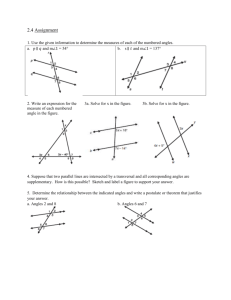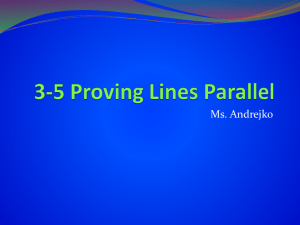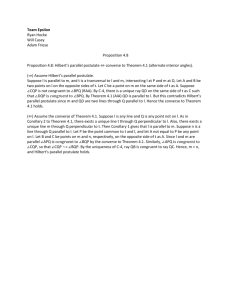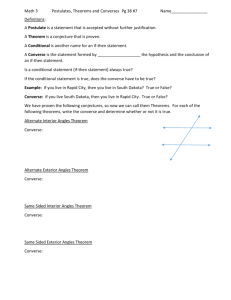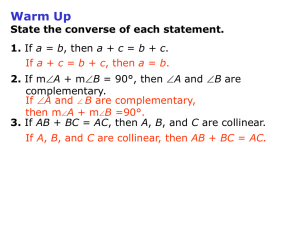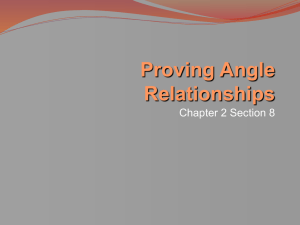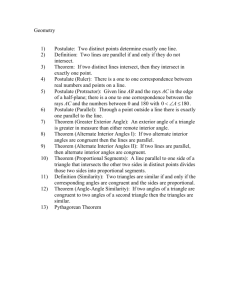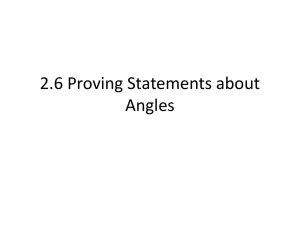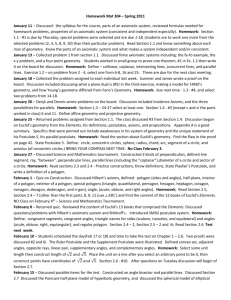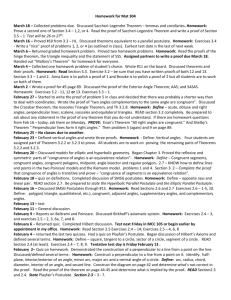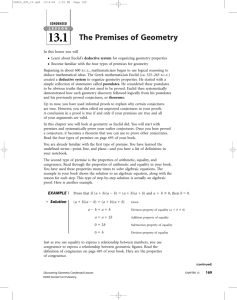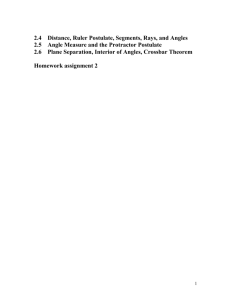3-2 Proving Lines Parallel
advertisement
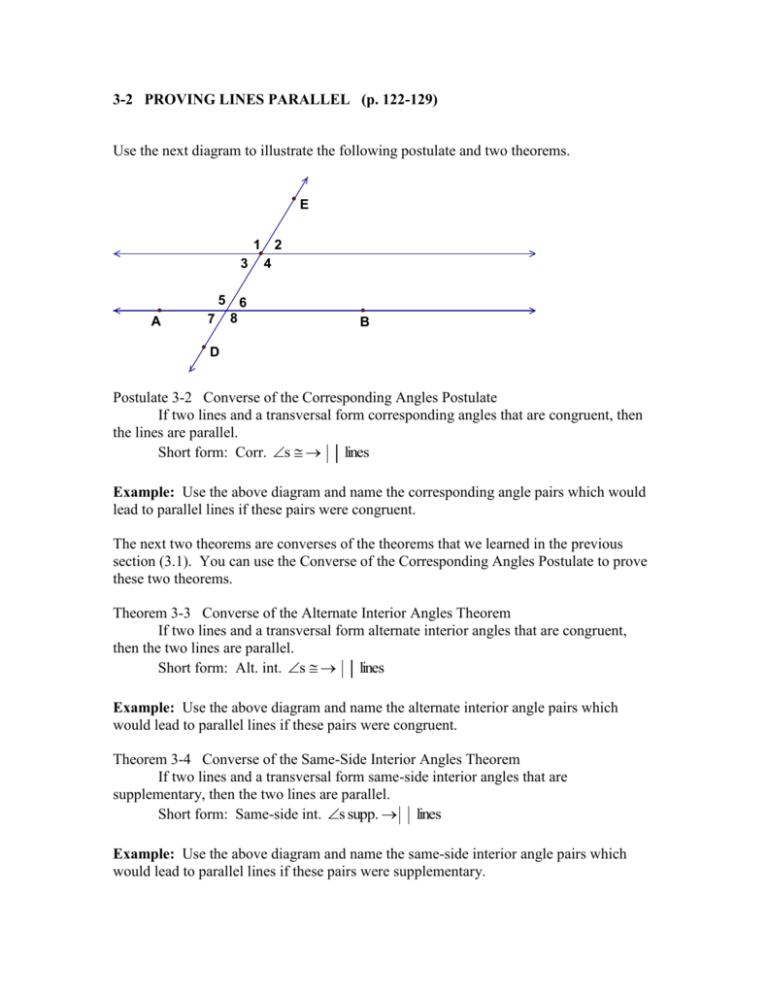
3-2 PROVING LINES PARALLEL (p. 122-129) Use the next diagram to illustrate the following postulate and two theorems. E 1 3 5 A 7 2 4 6 8 B D Postulate 3-2 Converse of the Corresponding Angles Postulate If two lines and a transversal form corresponding angles that are congruent, then the lines are parallel. Short form: Corr. s lines Example: Use the above diagram and name the corresponding angle pairs which would lead to parallel lines if these pairs were congruent. The next two theorems are converses of the theorems that we learned in the previous section (3.1). You can use the Converse of the Corresponding Angles Postulate to prove these two theorems. Theorem 3-3 Converse of the Alternate Interior Angles Theorem If two lines and a transversal form alternate interior angles that are congruent, then the two lines are parallel. Short form: Alt. int. s lines Example: Use the above diagram and name the alternate interior angle pairs which would lead to parallel lines if these pairs were congruent. Theorem 3-4 Converse of the Same-Side Interior Angles Theorem If two lines and a transversal form same-side interior angles that are supplementary, then the two lines are parallel. Short form: Same-side int. s supp. lines Example: Use the above diagram and name the same-side interior angle pairs which would lead to parallel lines if these pairs were supplementary. In proving Theorem 3-3, we will use a new form of proof called the flow proof. Here, arrows show the connections among statements. The statements are written in rectangular boxes. Each statement’s corresponding reason is written below it. Examine the flow proof in Ex. 1 on p. 123. Supply the fourth missing reason. You will write a flow proof to prove Theorem 3-4 in a homework problem. Example: 1 10 J 2 5 K 7 9 8 3 4 V 6 W Use the above diagram to answer the next three questions. Which lines must be parallel if 1 2. Justify your answer with a theorem or postulate. Which lines must be parallel if 5 6. Justify your answer with a theorem or postulate. Which lines must be parallel if 3 is supplementary to 7. Justify your answer with a theorem or postulate. Theorem 3-5 If two lines are parallel to the same line, then they are parallel to each other. In the diagram for Theorem 3-5 on p. 124, notice the tick marks or symbols for parallel lines. Observe that a c and b c. To eventually get a b, what property (reflexive, symmetric, or transitive) might be helpful? Hint: If you substituted for and considered segments rather than lines, what property would you use to obtain a third pair of congruent segments? Theorem 3-6 In a plane, if two lines are perpendicular to the same line, then they are parallel to each other. Example: Convert the paragraph proof for Ex. 3 on p. 124 into a flow proof. After doing this, then refer to p. 126 #16. Do 3 on p. 124. Have students provide a counterexample sketch to show that the lines do not have to be parallel. Hint: Consider congruent same-side exterior angles. There are good algebra problems that you can do that involve our new postulate and theorems. Example: Use the following diagram and find the value of x for which c c (14+3x) (5x-66) Do 4 on p. 125. d d. Homework p. 125-129: 2,3,6,10,13,17,19,21,23,25,26,30,33,36,44,51,53,60,69 21. Solve 3x - 18 75 23. Use vertical angles are congruent. Solve 7x 40 180 33. Make a sketch. 44. Vertical Angles Theorem (once) and the Converse of the Corresponding Angles Postulate (corr. s lines)

